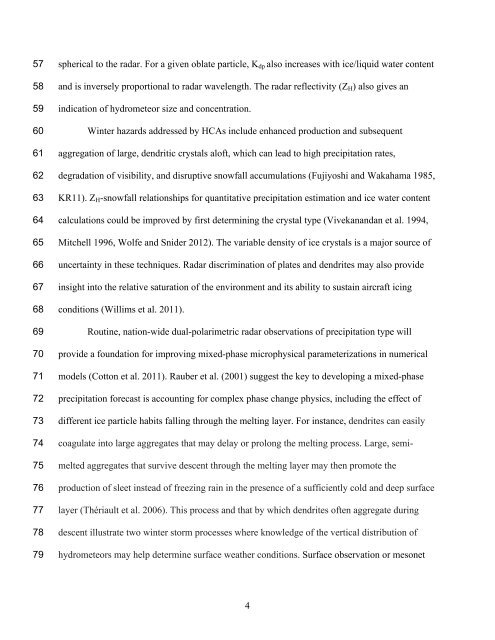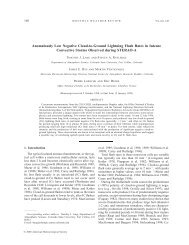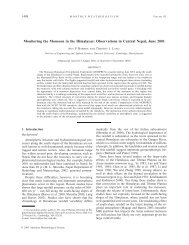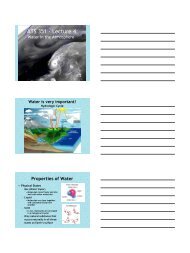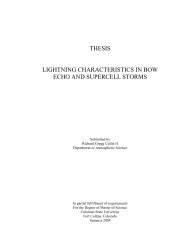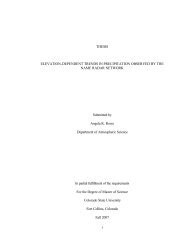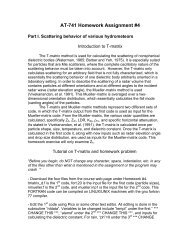1 A dual-polarization radar hydrometeor classification algorithm for ...
1 A dual-polarization radar hydrometeor classification algorithm for ...
1 A dual-polarization radar hydrometeor classification algorithm for ...
Create successful ePaper yourself
Turn your PDF publications into a flip-book with our unique Google optimized e-Paper software.
5758596061626364656667686970717273747576777879spherical to the <strong>radar</strong>. For a given oblate particle, K dp also increases with ice/liquid water contentand is inversely proportional to <strong>radar</strong> wavelength. The <strong>radar</strong> reflectivity (Z H ) also gives anindication of <strong>hydrometeor</strong> size and concentration.Winter hazards addressed by HCAs include enhanced production and subsequentaggregation of large, dendritic crystals aloft, which can lead to high precipitation rates,degradation of visibility, and disruptive snowfall accumulations (Fujiyoshi and Wakahama 1985,KR11). Z H -snowfall relationships <strong>for</strong> quantitative precipitation estimation and ice water contentcalculations could be improved by first determining the crystal type (Vivekanandan et al. 1994,Mitchell 1996, Wolfe and Snider 2012). The variable density of ice crystals is a major source ofuncertainty in these techniques. Radar discrimination of plates and dendrites may also provideinsight into the relative saturation of the environment and its ability to sustain aircraft icingconditions (Willims et al. 2011).Routine, nation-wide <strong>dual</strong>-polarimetric <strong>radar</strong> observations of precipitation type willprovide a foundation <strong>for</strong> improving mixed-phase microphysical parameterizations in numericalmodels (Cotton et al. 2011). Rauber et al. (2001) suggest the key to developing a mixed-phaseprecipitation <strong>for</strong>ecast is accounting <strong>for</strong> complex phase change physics, including the effect ofdifferent ice particle habits falling through the melting layer. For instance, dendrites can easilycoagulate into large aggregates that may delay or prolong the melting process. Large, semimeltedaggregates that survive descent through the melting layer may then promote theproduction of sleet instead of freezing rain in the presence of a sufficiently cold and deep surfacelayer (Thériault et al. 2006). This process and that by which dendrites often aggregate duringdescent illustrate two winter storm processes where knowledge of the vertical distribution of<strong>hydrometeor</strong>s may help determine surface weather conditions. Surface observation or mesonet4


